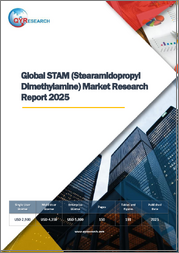
|
시장보고서
상품코드
1698104
세계의 만성 통증 치료 시장 : 산업 규모, 점유율, 동향, 기회, 예측, 적응증별, 제품 유형별, 유통 채널별, 지역별, 경쟁별(2020-2030년)Chronic Pain Treatment Market - Global Industry Size, Share, Trends, Opportunity, and Forecast, Segmented By Indication, By Product Type, By Distribution Channel, By Region and Competition, 2020-2030F |
||||||
만성 통증 치료 세계 시장 규모는 2024년에 842억 3,000만 달러로 평가되었습니다. 2030년까지 예측 기간 동안 1,320억 8,000만 달러에 달하고, 7.76%의 연평균 복합 성장률(CAGR)을 보일 것으로 예측됩니다.
관절염, 신경장애, 섬유근육통, 요통과 같은 장기적인 통증 질환을 앓고 있는 인구가 증가함에 따라 세계 만성 통증 치료 시장은 크게 확대되고 있습니다. 노인은 퇴행성 질환 및 근골격계 질환으로 인해 만성 통증에 노출되기 쉽기 때문에 고령화 인구 증가가 시장 성장에 크게 기여하고 있습니다. 의학 연구의 발전으로 비오피오이드 진통제 및 생물학적 제제와 같은 의약품 개입부터 신경 자극 및 재생의료와 같은 비약물 요법에 이르기까지 보다 효과적인 통증 관리 솔루션이 개발되고 있습니다. 환자들의 치료 옵션에 대한 인식이 높아지고, 통증 관리에 개인 맞춤형 의료가 통합되면서 혁신적인 치료법의 채택이 촉진되고 있습니다. 각국의 의료비 지출 증가와 개선된 의료비 상환 정책도 시장 확대를 촉진하고 있으며, 환자들은 첨단 만성통증치료에 대한 접근성이 향상되고 있습니다.
| 시장 개요 | |
|---|---|
| 예측 기간 | 2026-2030년 |
| 시장 규모 : 2024년 | 842억 3,000만 달러 |
| 시장 규모 : 2030년 | 1,320억 8,000만 달러 |
| CAGR : 2025-2030년 | 7.76% |
| 급성장 부문 | 신경병증성 통증 |
| 최대 시장 | 북미 |
보다 안전하고 효과적인 통증 관리 전략에 대한 수요가 주요 시장 동향을 형성하고 있으며, 오피오이드 중독과 의존성에 대한 우려로 인해 비오피오이드 요법으로의 전환이 두드러지게 나타나고 있습니다. 척수 자극 및 경피적 전기신경자극(TENS)과 같은 신경 조절 기술의 출현은 표적화된 저침습적 솔루션을 제공함으로써 만성 통증 치료에 혁명을 불러일으키고 있습니다. 줄기세포 치료와 다혈소판 혈장(PRP) 주사를 포함한 재생의학은 장기적인 통증 완화 및 조직 회복을 위한 유망한 대안으로 각광받고 있습니다. 모바일 애플리케이션과 웨어러블 기기 등 디지털 헬스 솔루션은 원격 모니터링, 환자 참여, 데이터 기반 치료 계획을 가능하게 함으로써 통증 관리를 개선하고 있습니다. 약수처리, 중재치료, 심리치료를 결합한 다학제적 통증 관리 접근법에 대한 관심이 높아지면서 환자 예후 개선에 기여하고 시장 성장을 가속하고 있습니다.
주요 시장 성장 촉진요인
고령화 인구 증가
주요 시장 이슈
오피오이드 위기와 규제 강화
주요 시장 동향
비오피오이드 통증 관리 증가
오피오이드 관련 부작용과 중독에 대한 우려로 인해 비오피오이드 대안을 찾는 환자들이 늘어나면서 대체 통증 관리 솔루션에 대한 수요가 증가하고 있습니다.
목차
제1장 개요
제2장 조사 방법
제3장 주요 요약
제4장 고객의 소리
제5장 세계의 만성 통증 치료 시장 전망
- 시장 규모와 예측
- 금액별
- 시장 점유율과 예측
- 적응증별(신경병증성 통증, 진통제 주입, 절제)
- 제품 유형별(의약품, 의료기기)
- 유통 채널별(병원 및 진료소, 외래 센터, 기타)
- 지역별
- 기업별(2024년)
- 시장 맵
제6장 북미의 만성 통증 치료 시장 전망
- 시장 규모와 예측
- 시장 점유율과 예측
- 북미 : 국가별 분석
- 미국
- 캐나다
- 멕시코
제7장 유럽의 만성 통증 치료 시장 전망
- 시장 규모와 예측
- 시장 점유율과 예측
- 유럽 : 국가별 분석
- 독일
- 영국
- 이탈리아
- 프랑스
- 스페인
제8장 아시아태평양의 만성 통증 치료 시장 전망
- 시장 규모와 예측
- 시장 점유율과 예측
- 아시아태평양 : 국가별 분석
- 중국
- 인도
- 일본
- 한국
- 호주
제9장 남미의 만성 통증 치료 시장 전망
- 시장 규모와 예측
- 시장 점유율과 예측
- 남미 : 국가별 분석
- 브라질
- 아르헨티나
- 콜롬비아
제10장 중동 및 아프리카의 만성 통증 치료 시장 전망
- 시장 규모와 예측
- 시장 점유율과 예측
- 중동 및 아프리카 : 국가별 분석
- 남아프리카공화국
- 사우디아라비아
- 아랍에미리트
제11장 시장 역학
- 성장 촉진요인과 과제
제12장 시장 동향과 발전
- 최근 동향
- 제품 출시
- 인수합병(M&A)
제13장 세계의 만성 통증 치료 시장 : SWOT 분석
제14장 경쟁 구도
- Pfizer Inc
- Abbott Laboratories
- Eli Lilly and Company
- Novartis AG
- Johnson & Johnson
- Sanofi SA
- Teva Pharmaceutical Industries Ltd
- Baxter International
- Merck & Co. Inc
- Boston Scientific Corporation
제15장 전략적 제안
제16장 리서치사에 대해 & 면책사항
LSH 25.04.22Global Chronic Pain Treatment Market was valued at USD 84.23 Billion in 2024 and is expected to reach USD 132.08 Billion in the forecast period with a CAGR of 7.76% through 2030. The global chronic pain treatment market is experiencing substantial expansion, driven by an increasing number of individuals suffering from long-term pain conditions such as arthritis, neuropathy, fibromyalgia, and lower back pain. The rising aging population contributes significantly to market growth, as elderly individuals are more prone to chronic pain due to degenerative diseases and musculoskeletal disorders. Advances in medical research have led to the development of more effective pain management solutions, ranging from pharmaceutical interventions like non-opioid analgesics and biologics to non-pharmacological treatments such as neurostimulation and regenerative medicine. Increasing patient awareness regarding available treatment options and the integration of personalized medicine in pain management are enhancing the adoption of innovative therapies. Growing healthcare expenditure and improved reimbursement policies in various countries further support market expansion, allowing patients greater access to advanced chronic pain treatments.
| Market Overview | |
|---|---|
| Forecast Period | 2026-2030 |
| Market Size 2024 | USD 84.23 Billion |
| Market Size 2030 | USD 132.08 Billion |
| CAGR 2025-2030 | 7.76% |
| Fastest Growing Segment | Neuropathic Pain |
| Largest Market | North America |
The demand for safer and more effective pain management strategies is shaping key market trends, with a notable shift toward non-opioid therapies due to concerns over opioid addiction and dependency. The emergence of neuromodulation technologies, including spinal cord stimulation and transcutaneous electrical nerve stimulation (TENS), is revolutionizing chronic pain treatment by offering targeted and minimally invasive solutions. Regenerative medicine, including stem cell therapy and platelet-rich plasma (PRP) injections, is gaining traction as a promising alternative for long-term pain relief and tissue repair. Digital health solutions, such as mobile applications and wearable devices, are improving pain management by enabling remote monitoring, patient engagement, and data-driven treatment plans. The increasing focus on multidisciplinary pain management approaches, which combine pharmacological, interventional, and psychological therapies, is contributing to better patient outcomes and driving market growth.
Key Market Drivers
Increasing Aging Population
The increasing aging population is a pivotal driver for the Global Chronic Pain Treatment Market, impacting the healthcare industry in several profound ways. With age comes an increased susceptibility to chronic pain conditions such as osteoarthritis, rheumatoid arthritis, neuropathy, and musculoskeletal disorders. In 2022, the age-adjusted prevalence of diagnosed arthritis in U.S. adults was 18.9%, with the percentage rising significantly with age from 3.6% in adults aged 18-34 to 53.9% in those aged 75 and older. This heightened prevalence among the elderly directly fuels the demand for effective pain management solutions.
Advances in healthcare have resulted in extended life expectancy worldwide. For instance, in 2023, life expectancy at birth for the U.S. population increased to 78.4 years, up from 77.5 years in 2022. While this is a remarkable achievement, it also means that a significant portion of the population is living longer, thereby increasing the likelihood of experiencing chronic pain as they age. Elderly individuals commonly suffer from multiple chronic health conditions simultaneously, which can exacerbate pain symptoms and necessitate more complex and comprehensive pain management strategies.
Key Market Challenges
Opioid Crisis and Regulatory Scrutiny
The opioid crisis, characterized by the misuse and addiction to prescription opioid pain relievers, has led to heightened regulatory scrutiny on the use of opioids in chronic pain management. In response to the crisis, regulators have imposed stricter guidelines on opioid prescribing, distribution, and monitoring.
Stricter regulations have made it more challenging for patients to access opioid-based pain medications, even when medically necessary, leading to concerns about undertreated pain. Healthcare providers and pharmaceutical companies face increased legal liability related to opioid prescriptions, which can result in cautious prescribing practices and a reluctance to develop new opioid-based pain medications.
Key Market Trends
Rise in Non-Opioid Pain Management
Trend: There is a growing shift away from opioid-based pain management towards non-opioid alternatives. This trend is driven by concerns over the opioid crisis, regulatory restrictions on opioid prescriptions, and the desire to reduce the risk of addiction and overdose.
Opioid medications carry a risk of addiction and overdose, making non-opioid alternatives more attractive for patients and healthcare providers concerned about patient safety. Stricter regulations on opioid prescribing and dispensing have pushed healthcare providers to explore non-opioid treatments to comply with these guidelines.
Patients are increasingly seeking non-opioid options due to the fear of opioid-related side effects and addiction, creating a demand for alternative pain management solutions.
Key Market Players
Pfizer Inc
Abbott Laboratories
Eli Lilly and Company
Novartis AG
Johnson & Johnson
Sanofi SA
Teva Pharmaceutical Industries Ltd
Baxter International
Merck & Co. Inc
Boston Scientific Corporation
Report Scope:
In this report, the Global Chronic Pain Treatment Market has been segmented into the following categories, in addition to the industry trends which have also been detailed below:
Chronic Pain Treatment Market, By Indication:
- Neuropathic Pain
- Analgesic Infusion
- Ablation
Chronic Pain Treatment Market, By Product Type:
- Drugs
- Devices
Chronic Pain Treatment Market, By Distribution Channel:
- Hospital & Clinics
- Ambulatory Centers
- Others
Chronic Pain Treatment Market, By Region:
- North America
- United States
- Canada
- Mexico
- Europe
- France
- United Kingdom
- Italy
- Germany
- Spain
- Asia-Pacific
- China
- India
- Japan
- Australia
- South Korea
- South America
- Brazil
- Argentina
- Colombia
- Middle East & Africa
- South Africa
- Saudi Arabia
- UAE
Competitive Landscape
Company Profiles: Detailed analysis of the major companies present in the Global Chronic Pain Treatment Market.
Available Customizations:
Global Chronic Pain Treatment market report with the given market data, TechSci Research offers customizations according to a company's specific needs. The following customization options are available for the report:
Company Information
Detailed analysis and profiling of additional market players (up to five).
Table of Contents
1. Product Overview
- 1.1. Market Definition
- 1.2. Scope of the Market
- 1.2.1. Markets Covered
- 1.2.2. Years Considered for Study
- 1.2.3. Key Market Segmentations
2. Research Methodology
- 2.1. Objective of the Study
- 2.2. Baseline Methodology
- 2.3. Key Industry Partners
- 2.4. Major Association and Secondary Sources
- 2.5. Forecasting Methodology
- 2.6. Data Triangulation & Validation
- 2.7. Assumptions and Limitations
3. Executive Summary
- 3.1. Overview of the Market
- 3.2. Overview of Key Market Segmentations
- 3.3. Overview of Key Market Players
- 3.4. Overview of Key Regions/Countries
- 3.5. Overview of Market Drivers, Challenges, Trends
4. Voice of Customer
5. Global Chronic Pain Treatment Market Outlook
- 5.1. Market Size & Forecast
- 5.1.1. By Value
- 5.2. Market Share & Forecast
- 5.2.1. By Indication (Neuropathic Pain, Analgesic Infusion, Ablation)
- 5.2.2. By Product Type (Drugs, Devices)
- 5.2.3. By Distribution Channel (Hospital & Clinics, Ambulatory Centers, Others)
- 5.2.4. By Region
- 5.2.5. By Company (2024)
- 5.3. Market Map
6. North America Chronic Pain Treatment Market Outlook
- 6.1. Market Size & Forecast
- 6.1.1. By Value
- 6.2. Market Share & Forecast
- 6.2.1. By Indication
- 6.2.2. By Product Type
- 6.2.3. By Distribution Channel
- 6.2.4. By Country
- 6.3. North America: Country Analysis
- 6.3.1. United States Chronic Pain Treatment Market Outlook
- 6.3.1.1. Market Size & Forecast
- 6.3.1.1.1. By Value
- 6.3.1.2. Market Share & Forecast
- 6.3.1.2.1. By Indication
- 6.3.1.2.2. By Product Type
- 6.3.1.2.3. By Distribution Channel
- 6.3.1.1. Market Size & Forecast
- 6.3.2. Canada Chronic Pain Treatment Market Outlook
- 6.3.2.1. Market Size & Forecast
- 6.3.2.1.1. By Value
- 6.3.2.2. Market Share & Forecast
- 6.3.2.2.1. By Indication
- 6.3.2.2.2. By Product Type
- 6.3.2.2.3. By Distribution Channel
- 6.3.2.1. Market Size & Forecast
- 6.3.3. Mexico Chronic Pain Treatment Market Outlook
- 6.3.3.1. Market Size & Forecast
- 6.3.3.1.1. By Value
- 6.3.3.2. Market Share & Forecast
- 6.3.3.2.1. By Indication
- 6.3.3.2.2. By Product Type
- 6.3.3.2.3. By Distribution Channel
- 6.3.3.1. Market Size & Forecast
- 6.3.1. United States Chronic Pain Treatment Market Outlook
7. Europe Chronic Pain Treatment Market Outlook
- 7.1. Market Size & Forecast
- 7.1.1. By Value
- 7.2. Market Share & Forecast
- 7.2.1. By Indication
- 7.2.2. By Product Type
- 7.2.3. By Distribution Channel
- 7.2.4. By Country
- 7.3. Europe: Country Analysis
- 7.3.1. Germany Chronic Pain Treatment Market Outlook
- 7.3.1.1. Market Size & Forecast
- 7.3.1.1.1. By Value
- 7.3.1.2. Market Share & Forecast
- 7.3.1.2.1. By Indication
- 7.3.1.2.2. By Product Type
- 7.3.1.2.3. By Distribution Channel
- 7.3.1.1. Market Size & Forecast
- 7.3.2. United Kingdom Chronic Pain Treatment Market Outlook
- 7.3.2.1. Market Size & Forecast
- 7.3.2.1.1. By Value
- 7.3.2.2. Market Share & Forecast
- 7.3.2.2.1. By Indication
- 7.3.2.2.2. By Product Type
- 7.3.2.2.3. By Distribution Channel
- 7.3.2.1. Market Size & Forecast
- 7.3.3. Italy Chronic Pain Treatment Market Outlook
- 7.3.3.1. Market Size & Forecast
- 7.3.3.1.1. By Value
- 7.3.3.2. Market Share & Forecast
- 7.3.3.2.1. By Indication
- 7.3.3.2.2. By Product Type
- 7.3.3.2.3. By Distribution Channel
- 7.3.3.1. Market Size & Forecast
- 7.3.4. France Chronic Pain Treatment Market Outlook
- 7.3.4.1. Market Size & Forecast
- 7.3.4.1.1. By Value
- 7.3.4.2. Market Share & Forecast
- 7.3.4.2.1. By Indication
- 7.3.4.2.2. By Product Type
- 7.3.4.2.3. By Distribution Channel
- 7.3.4.1. Market Size & Forecast
- 7.3.5. Spain Chronic Pain Treatment Market Outlook
- 7.3.5.1. Market Size & Forecast
- 7.3.5.1.1. By Value
- 7.3.5.2. Market Share & Forecast
- 7.3.5.2.1. By Indication
- 7.3.5.2.2. By Product Type
- 7.3.5.2.3. By Distribution Channel
- 7.3.5.1. Market Size & Forecast
- 7.3.1. Germany Chronic Pain Treatment Market Outlook
8. Asia-Pacific Chronic Pain Treatment Market Outlook
- 8.1. Market Size & Forecast
- 8.1.1. By Value
- 8.2. Market Share & Forecast
- 8.2.1. By Indication
- 8.2.2. By Product Type
- 8.2.3. By Distribution Channel
- 8.2.4. By Country
- 8.3. Asia-Pacific: Country Analysis
- 8.3.1. China Chronic Pain Treatment Market Outlook
- 8.3.1.1. Market Size & Forecast
- 8.3.1.1.1. By Value
- 8.3.1.2. Market Share & Forecast
- 8.3.1.2.1. By Indication
- 8.3.1.2.2. By Product Type
- 8.3.1.2.3. By Distribution Channel
- 8.3.1.1. Market Size & Forecast
- 8.3.2. India Chronic Pain Treatment Market Outlook
- 8.3.2.1. Market Size & Forecast
- 8.3.2.1.1. By Value
- 8.3.2.2. Market Share & Forecast
- 8.3.2.2.1. By Indication
- 8.3.2.2.2. By Product Type
- 8.3.2.2.3. By Distribution Channel
- 8.3.2.1. Market Size & Forecast
- 8.3.3. Japan Chronic Pain Treatment Market Outlook
- 8.3.3.1. Market Size & Forecast
- 8.3.3.1.1. By Value
- 8.3.3.2. Market Share & Forecast
- 8.3.3.2.1. By Indication
- 8.3.3.2.2. By Product Type
- 8.3.3.2.3. By Distribution Channel
- 8.3.3.1. Market Size & Forecast
- 8.3.4. South Korea Chronic Pain Treatment Market Outlook
- 8.3.4.1. Market Size & Forecast
- 8.3.4.1.1. By Value
- 8.3.4.2. Market Share & Forecast
- 8.3.4.2.1. By Indication
- 8.3.4.2.2. By Product Type
- 8.3.4.2.3. By Distribution Channel
- 8.3.4.1. Market Size & Forecast
- 8.3.5. Australia Chronic Pain Treatment Market Outlook
- 8.3.5.1. Market Size & Forecast
- 8.3.5.1.1. By Value
- 8.3.5.2. Market Share & Forecast
- 8.3.5.2.1. By Indication
- 8.3.5.2.2. By Product Type
- 8.3.5.2.3. By Distribution Channel
- 8.3.5.1. Market Size & Forecast
- 8.3.1. China Chronic Pain Treatment Market Outlook
9. South America Chronic Pain Treatment Market Outlook
- 9.1. Market Size & Forecast
- 9.1.1. By Value
- 9.2. Market Share & Forecast
- 9.2.1. By Indication
- 9.2.2. By Product Type
- 9.2.3. By Distribution Channel
- 9.2.4. By Country
- 9.3. South America: Country Analysis
- 9.3.1. Brazil Chronic Pain Treatment Market Outlook
- 9.3.1.1. Market Size & Forecast
- 9.3.1.1.1. By Value
- 9.3.1.2. Market Share & Forecast
- 9.3.1.2.1. By Indication
- 9.3.1.2.2. By Product Type
- 9.3.1.2.3. By Distribution Channel
- 9.3.1.1. Market Size & Forecast
- 9.3.2. Argentina Chronic Pain Treatment Market Outlook
- 9.3.2.1. Market Size & Forecast
- 9.3.2.1.1. By Value
- 9.3.2.2. Market Share & Forecast
- 9.3.2.2.1. By Indication
- 9.3.2.2.2. By Product Type
- 9.3.2.2.3. By Distribution Channel
- 9.3.2.1. Market Size & Forecast
- 9.3.3. Colombia Chronic Pain Treatment Market Outlook
- 9.3.3.1. Market Size & Forecast
- 9.3.3.1.1. By Value
- 9.3.3.2. Market Share & Forecast
- 9.3.3.2.1. By Indication
- 9.3.3.2.2. By Product Type
- 9.3.3.2.3. By Distribution Channel
- 9.3.3.1. Market Size & Forecast
- 9.3.1. Brazil Chronic Pain Treatment Market Outlook
10. Middle East and Africa Chronic Pain Treatment Market Outlook
- 10.1. Market Size & Forecast
- 10.1.1. By Value
- 10.2. Market Share & Forecast
- 10.2.1. By Indication
- 10.2.2. By Product Type
- 10.2.3. By Distribution Channel
- 10.2.4. By Country
- 10.3. MEA: Country Analysis
- 10.3.1. South Africa Chronic Pain Treatment Market Outlook
- 10.3.1.1. Market Size & Forecast
- 10.3.1.1.1. By Value
- 10.3.1.2. Market Share & Forecast
- 10.3.1.2.1. By Indication
- 10.3.1.2.2. By Product Type
- 10.3.1.2.3. By Distribution Channel
- 10.3.1.1. Market Size & Forecast
- 10.3.2. Saudi Arabia Chronic Pain Treatment Market Outlook
- 10.3.2.1. Market Size & Forecast
- 10.3.2.1.1. By Value
- 10.3.2.2. Market Share & Forecast
- 10.3.2.2.1. By Indication
- 10.3.2.2.2. By Product Type
- 10.3.2.2.3. By Distribution Channel
- 10.3.2.1. Market Size & Forecast
- 10.3.3. UAE Chronic Pain Treatment Market Outlook
- 10.3.3.1. Market Size & Forecast
- 10.3.3.1.1. By Value
- 10.3.3.2. Market Share & Forecast
- 10.3.3.2.1. By Indication
- 10.3.3.2.2. By Product Type
- 10.3.3.2.3. By Distribution Channel
- 10.3.3.1. Market Size & Forecast
- 10.3.1. South Africa Chronic Pain Treatment Market Outlook
11. Market Dynamics
- 11.1. Drivers & Challenges
12. Market Trends & Developments
- 12.1. Recent Developments
- 12.2. Product Launches
- 12.3. Mergers & Acquisitions
13. Global Chronic Pain Treatment Market: SWOT Analysis
14. Competitive Landscape
- 14.1. Pfizer Inc
- 14.2. Abbott Laboratories
- 14.3. Eli Lilly and Company
- 14.4. Novartis AG
- 14.5. Johnson & Johnson
- 14.6. Sanofi SA
- 14.7. Teva Pharmaceutical Industries Ltd
- 14.8. Baxter International
- 14.9. Merck & Co. Inc
- 14.10.Boston Scientific Corporation
15. Strategic Recommendations
16. About Us & Disclaimer
(주말 및 공휴일 제외)


















